
When stamps tell our nation’s story
Published on Nil| by nst.com.my , pinterest.com & en.wikipedia.org
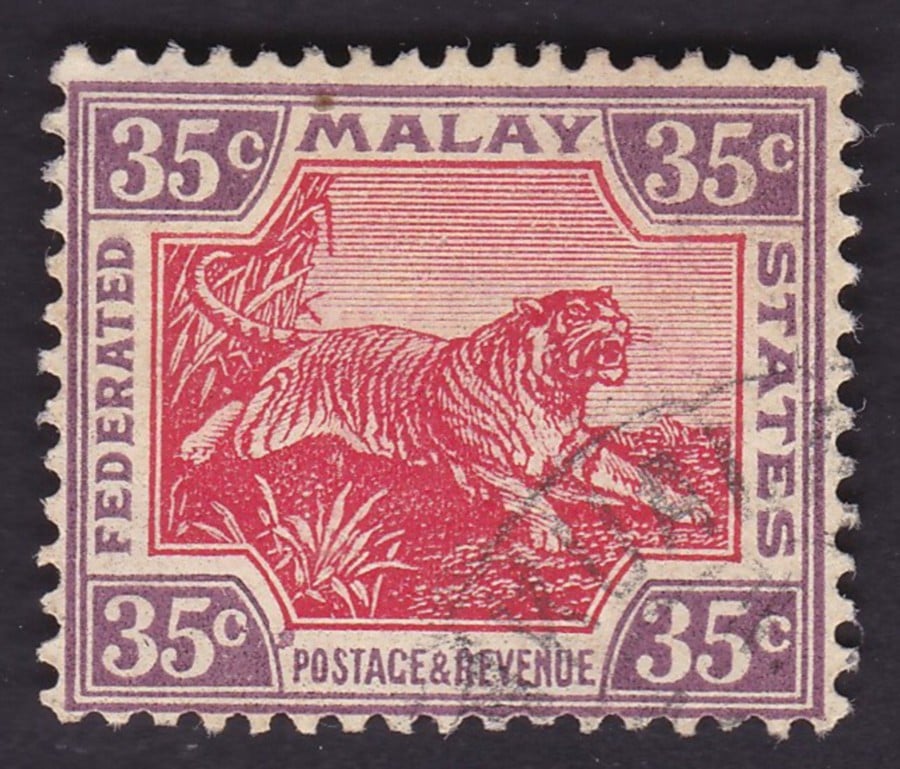
“CAN it be true? Is it a real flaw or just a figment of my imagination?” Rubbing my eyes in disbelief, I reach for the magnifying glass and begin training my eyes on the Federated Malay States (FMS) stamp.
The conspicuous purple smudge near the lower left value tablet looks much clearer. It’s definitely a printing error and that alone adds value to the otherwise ordinary stamp. All fired up with the unexpected discovery, I scan the rest of my FMS collection hoping to find more examples with this misprinting. Sadly, my efforts prove futile.
Unperturbed, I snap a few detailed photos of the error and email them to my friend, Richard Hale, who lives in Singapore. Hale, a Malayan philately expert, should be able to shed more light on my find. In the correspondence, I also express surprise at my ability to still find new errors despite having formed the collection more than 20 years ago!
While waiting for Hale’s valued opinion, I decide to trawl through my postal history collection with a fresh pair of eyes just in case there other types of misprinting waiting to be found. At the same time, it’s a great opportunity to refresh my memory regarding the history of Perak, Selangor, Negri Sembilan and Pahang, the four Malay states which were politically consolidated to form the FMS on July 1, 1896.
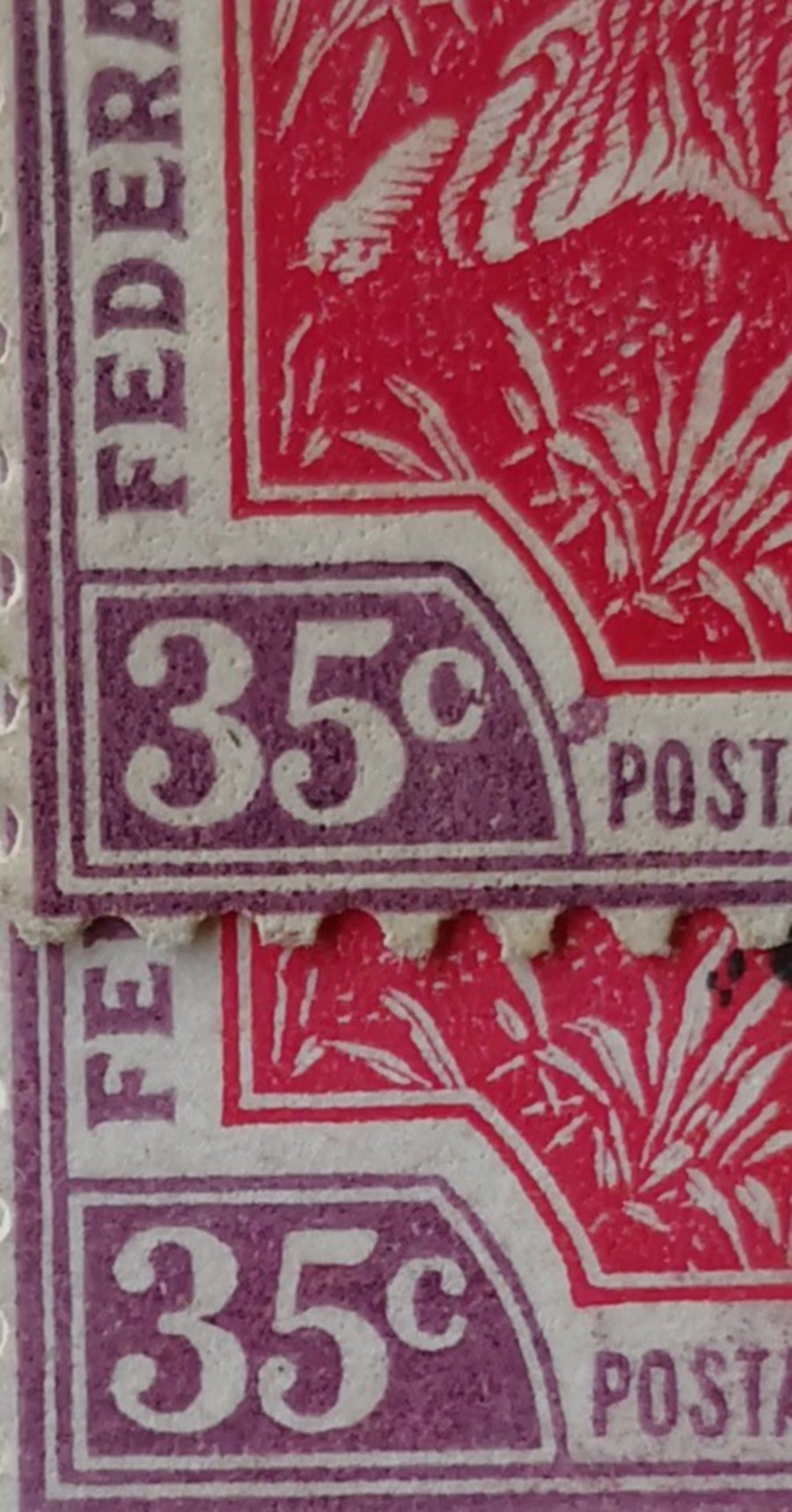
DEFINITIVE STAMPS
This merger, however, didn’t have any effect on the postal services in the four states until three years later when an arrangement was made for the FMS to become a member of the Universal Postal Union (UPU). This orchestration, which started in 1899, would allow stamps issued by the FMS to be recognised by all member countries in the UPU. The FMS was finally given full membership in 1915.
The UPU, with its headquarters in the Swiss capital Berne, was established in 1874. This world second oldest international organisation was primarily responsible for producing guidelines related to international postal rates as well as help stimulate growth in mail and parcel volumes.
With the first step towards international recognition already in the making, the FMS authorities quickly put in place plans to produce the first definitive (regular issue) set of stamps. Several eye-catching designs were proposed and, after much deliberation, one featuring a magnificent leaping tiger received the approval of the Resident General as well as the Residents from each of the four Malay states. They unanimously agreed that the jungle cat well represented the strength and tenacity of the FMS.
The British Colonial Crown Agents in London subsequently sent the final approved designs and colour schemes to the printers on May 17, 1899. The order stipulated that the stamps had to be ready within a year.
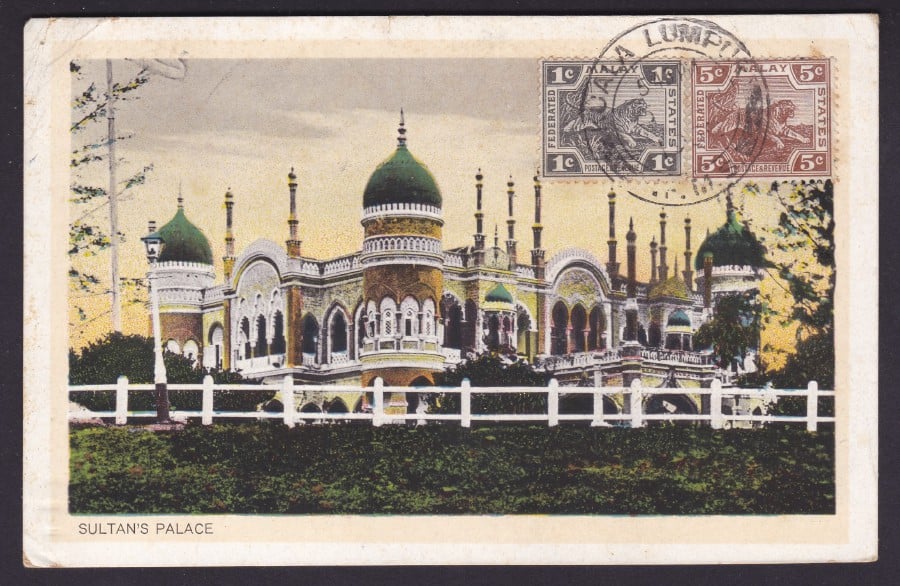
The Crown Agents was an influential administrative branch of the British Empire established in the early 19th century. Among its many duties was to provide and promote the usage of postage stamps in countries ruled by the British.
The first FMS stamps arrived in Malaya in 1901 and were progressively put on sale at post offices throughout the four states. The stamps were printed in different colours to differentiate between the eight dissimilar denominations: 1¢, 3¢, 4¢, 5¢, 8¢, 10¢, 20¢ and 50¢.
All the adhesives, however, had the same tiger design in the centre. The vignette was surrounded by the words ‘FEDERATED MALAY STATES’ on the upper portion of the frame and ‘POSTAGE & REVENUE’ on the lower margin.
Like most stamps issued in Malaya back in those days, the FMS adhesives were printed by De La Rue, a London-based company that began producing postage stamps in 1855. As an added security measure, the stamps were printed on specially prepared Crown CA paper, bearing the watermark of the British Colonial and Crown Agents.

COLOUR AND DESIGN
During my early stamp collecting days, it was quite a challenge to determine these faint watermarks. The two dry methods commonly used by philatelists were to either turn the stamp face down on a piece of black paper or hold the stamp with its front against a bright light to view the watermark. Although this was laborious and time consuming, I persevered with the endeavour as finding stamps with inverted or sideway watermarks could increase their value exponentially.
My other spare time indulgence in the past was to examine each stamp closely and fish out the ones with distinct colour variations. It was particularly satisfying to find the occasional stamp with a rare colour shade.
One good example was the bicolour 8¢ FMS stamp which was printed in either ultramarine and grey or ultramarine and black. Due to its scarcity, most internationally-recognised stamp catalogues attributed a significantly higher value to the latter.
Before long, I reach the album pages containing the higher denominated dollar values. The design on these larger sized stamps are a distinct departure from their lower value counterparts. Instead of the regal tiger, the vignette features an attractive group of elephants with their mahouts.
This design was adopted from an engraving found in Major John Frederick Adolphus McNair’s book entitled Perak and the Malays: Sarong & Kris. Published by Tinsley Bros in 1878, it gave an accurate account of the people living in Perak at that time, including their customs, history and habits.
The book was based on McNair’s observations during his two year stint in the state while acting as Chief Commissioner in the enquiry following the assassination of Perak Resident, James Wheeler Woodford Birch in Pasir Salak on Nov 2, 1875.
A closer look at the stamps reveals something unusual; something that most collectors often fail to notice. The smallest elephant in the group is actually facing the wrong direction! Clearly the young pachyderm was distracted at the time when the photograph was about to be taken. By then it was probably too late. Fate has it that the baby elephant’s rear was to end up prominently displayed for posterity!
FMS stamps were sold in the post offices of Selangor, Perak, Pahang and Negri Sembilan for more than 33 years. Their sale only came to an end in 1935 when a larger confederation comprising all the nine Malay states came into effect.
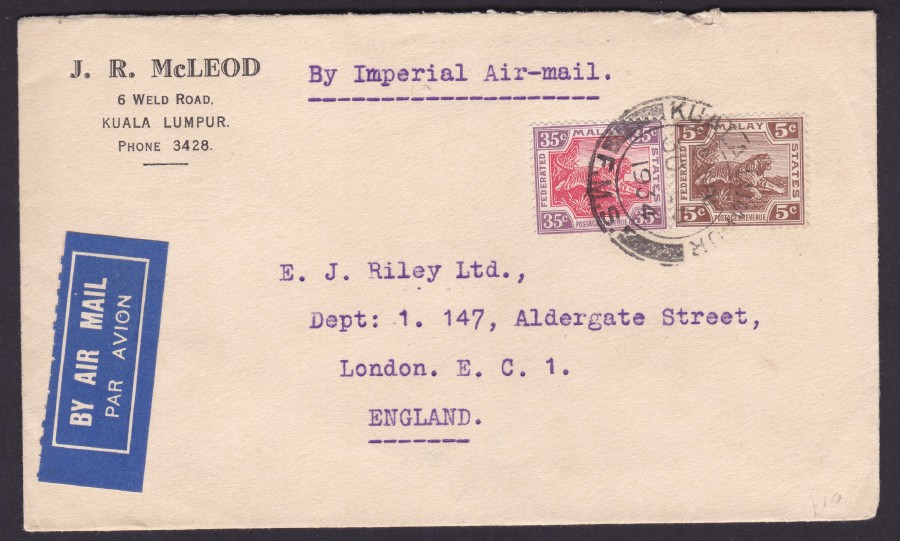
MAJOR EVENTS AND DEVELOPMENTS
The presence of several envelopes stamped with the words ‘TRAIN LETTER’ on an album page calls to mind the importance of rail transportation during the early part of the 20th century in Malaya. The main trunk railway between Penang and Kuala Lumpur was already in existence by the time the postal departments in Perak, Selangor, Negri Sembilan and Pahang were federalised with uniform regulations in 1905. It became the backbone of postal routes until the introduction of air services in the late 1930s.
During those early years, the weekly mail brought in by steamers from Europe were off-loaded in Penang. There, a team of sorters would separate the packages and letters according to their final destination points before placing them in specially designated gunny sacks. Additional handstamps in English were affixed on envelopes if the address was written in a foreign language. This was to help the postmen when they went on their delivery rounds.
The postal service in the east coast ports of Pahang, however, remained heavily dependent on steamers and small river crafts until the East Coast Railway was operational in the mid-1920s. The onset of the First World War had a larger than expected impact on the FMS postal service where overseas mail suffered severe disruptions. In 1918, the Straits Times reported that mail originating from London on June 27 and September 11 were lost when the ships carrying them were sunk by enemy torpedoes.
Fearing for the safety of their crew as well as cargo, shipping companies drastically reduced the frequency of their vessels plying the Europe-Asia trade routes. This led to a sharp decrease in the supply of imported goods and sent the prices of essential items on an upward spiral.
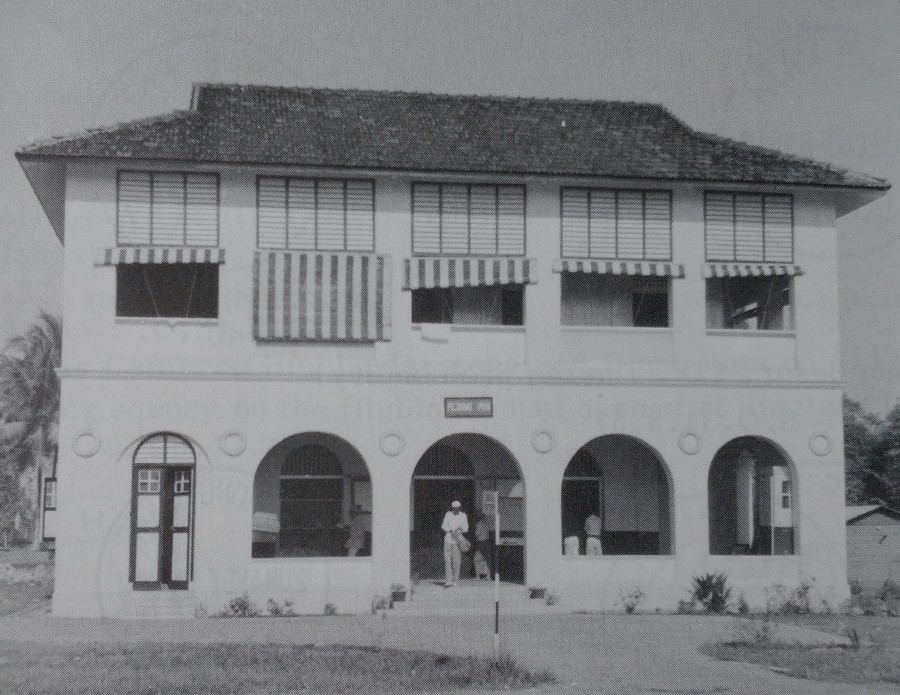
In order to keep up with rising costs, the FMS postal service increased the postage rate in 1918. The inland post card rate was doubled from its initial 1 cent charge. A decision was made to overprint the existing 1¢ cards to reflect the new rate change.
While looking at my uprated post card sent internally, from Menglembu to Teluk Anson (Teluk Intan now), I suddenly recall reading about a notice related to this rate increase published in the Straits Times. It stated that members of the public who’d bought the postcards prior to this change were advised to affix an additional 1¢ stamp before dropping off their mail at the post offices or mail boxes.
News about the FMS postal services once again grabbed the headlines when the Straits Times reported of a major flood that took place in the east coast in January 1924. The inundation was so bad that the overland motor mail service to Kuantan was interrupted for nearly three weeks, starting from Jan 8, 1924. As a stop gap measure, the authorities had to divert mail down to Singapore by rail and then a small launch was used to ferry the mail to their final destination.
Motor launches were also used extensively in Perak to serve the isolated kampungs along the Perak River. Unfortunately, mishaps were quite frequent especially when these small crafts were destabilised by floating debris brought in by the swift current.
A launch carrying passengers and mail from Pulau Tiga on the Perak River sank on Jan 15, 1924. No lives were lost and the submerged craft was raised four days later. Most of the mail were recovered, dried and subsequently delivered to their respective recipients!
The worst floods in living memory happened in 1926. It not only ravaged Pahang but also all the other states in the FMS. Nearly all the settlements, including large towns, located along the Perak River suffered severe damage. In Kuala Kangsar, the flood waters rose over the roof of the post office. Major towns like Grik and Teluk Anson were cut off from the rest of the outside world for more than a week.
The train service connecting Penang, Ipoh and Kuala Lumpur was suspended on Dec 26, 1926 when tracks at most places were submerged under murky waters. On that same day, water entered the Kuala Lumpur General Post Office. The situation became so bad that five small boats had to be brought in from Port Swettenham (Port Klang now) on Dec 30, 1926 to help the postal clerks reach their work place.
In Pahang, the rivers broke their banks and the water rose more than 25 metres above the danger level. Temerloh, Sungai Lembing and their surrounding kampungs were totally devastated. The post offices in Mentakab, Kuala Lipis and Pekan were also badly damaged.
Just as I’m about to reach the last page of my collection, my phone alerts me to an incoming email from Hale. I read his comments with great hopes but unfortunately he believes that the error I’d discovered is a one-off fluke and unlikely to be a constant flaw.
My heart sinks momentarily. Having an unrecorded constant flaw would mean that there’d be more of the same error waiting to be found. Furthermore, stamp catalogues attribute very high values to stamps with consistent errors and maintain a policy of not listing one-off printing mistakes like the one I found.
Nevertheless, I’m also heartened by the fact that I managed to spot such a minute mistake. Perhaps with a little bit of luck, I’ll be able to pin-point better errors in the future. For now, I’m contented with the items in my possession and will cherish them for a long time to come.
Postage stamps and postal history of Malaysia
Federated Malay States
In 1896, the Federated Malay States were formed. The first stamps of the Federated Malay States began in 1900, when the stamps of Negri-Sembilan and Perak were overprinted “Federated Malay States”.
In 1901, a series of stamps of 12 denominations was issued, showing a jumping tiger or an elephants. Stamps of the same designs continued were issued until 1934 in a large number of varieties.
During July 16, 1900 to January 1, 1902, due to a shortage of stamps, stamps of the Straits Settlements were also used. The stamps of the Federated Malay States ceased in 1935 and were replaced by stamps of the individual states.
The history of postage stamps and postal history of Malaysia, a state in Southeast Asia that occupies the south of the Malay peninsula and Sarawak and Sabah in the north Borneo, includes the development of postal services in these periods:[1]
- the sultanates as British protectorates (1874-1941, 1948-1957),
- Japanese occupation during the Second World War (1941-1945),
- British military administration (1945-1948) and
- independence of the state (since 1957).
Malaysia has been issuing stamps after independence from the United Kingdom in 1957, first as the Federation of Malaya, then as Malaysia after 1963. The national postal operator is Pos Malaysia.









